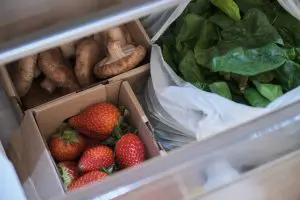In Canada, the CFIA handles, on average, 175 food recalls a year. In the United States, Time Magazine reports that the number of food recalls for 2018 was 703, a number decrease from previous years.
A major food recall can cost easily over 10 million dollars. For any food business, experiencing one major recall is one too many. However, recall is not the enemy here. On the contrary, when a potentially hazardous material enters the food market, an effective food recall program can be the last defense against a catastrophic outcome. Prompt recalls can prevent outbreaks of foodborne diseases and protect the consumer.
What is a food recall? A recall is a systematic withdrawal of contaminated food products from the market, which is generally overseen by the health authorities such as the FDA or the USDA in the United States or the CFIA in Canada. The faster a recall can be executed, the less likely consumers will be exposed to the contaminated food. Depending on the severity of the recall, how fast your business responds to it can literally be a question of life and death.
Depending on the risk level, the recalls are categorized into three different classes:
- Class 1: the highest risk level. The contaminated food may result in serious sickness or injury, even death, in sensitive populations. In this category, we often find undeclared allergen contamination and pathogenic (harmful bacteria) contamination and recalls related to existing outbreaks.
- Class 2: less severe than Class 1. The risk of causing serious illness or injury is lower, but there is still the possibility of it happening.
- Class 3: the least severe. This risk is typically low or no food safety concern. This is mostly a case of a voluntary withdrawal of products due to quality reasons.
No matter what category the food recall falls under, it requires a multi-functional team to efficiently conduct a recall and communicate with stakeholders: customers, suppliers, regulatory authorities, and sometimes, the media. An effective recall team usually consists of a recall coordinator who orchestrates the recall process and a food safety professional who liaises with the health authorities. In addition, it will need the involvement of Sales to quickly notify customers, Procurement to contact suppliers, Logistics to handle the return of quarantined products, and sometimes, in larger corporations, a public relations officer to handle the press and communicate with the internal employees.
When a recall is initiated, the first step is to summon the recall team. This may happen at night or on the weekend. The recall team must be trained ahead of time and fully understand its responsibility. The health authority must also be notified immediately.
Based on the nature of the recall, all the products that may be unsafe must be identified by lot# or manufacturing date. The team may identify multiple lots affected by a batch of contaminated raw materials. The recalled product could also have been produced on a specific date or on the same production line over multiple days. This is often the case with a physical hazard contamination where broken glass or plastic enters the food production stream inadvertently. Environmental pathogens such as Listeria monocytogenes or Salmonella spp. can create growth niches on the equipment or in nearby areas and contaminate products as they are produced.
Once the finished goods are identified, the next step is to trace the products to their immediate destination. The outcome of this step depends on the effectiveness of the traceability program. It is highly recommended to implement a computerized system to track all lot number information from receiving, to manufacturing and eventually to shipping.
It should take businesses less than 4 hours to complete these steps and preferably less than 2 hours. Note that every extra hour you spend during the recall means that more products are being distributed further down the supply chain and more consumers are being exposed to food safety risks.
During these steps, the food inspectors from the regulatory authorities will work closely with the food producer. The business is expected to disclose to the FDA, USDA, or CFIA the product list to be recalled and the list of customers who have received the food.
The authority will prepare an official press release to publish the recall notification. Meanwhile, your team is expected to prepare your own press release and publish it on your website or where consumers of your food will see it. The wording of the press release needs to be clear and should not distract from the recall (no marketing information). It may also be wise to control the flow of information coming from the site during the recall. You may want to have your employees sign a confidentiality agreement at that time.
You should always have a notice of recall template at the ready. On the notice of recall, there should be clear instructions about actions to take after receiving the notice of recall. The notice should be sent by email and should be immediately followed up with a phone call to confirm that the notice of recall was received and instructions understood. It is also highly recommended to require a written receipt for the notice as proof of due diligence.
Once the food products are returned, make sure that they are clearly identified as detained until further actions are determined. Depending on the nature of the issue, the recall may need to be expanded to include more products. In that case, the steps shall be repeated until all affected lots are controlled. Recalls can sometimes last many months (ex: 2016 flour recalls).
At the end of the recall, the effectiveness of the process must be evaluated. The evaluation will be based on the answers to the following questions:
- Did the recall team gather in time and collect information promptly?
- How long did it take to identify all affected products?
- What is the percentage of the products that the manufacturing site was able to identify and control?
- How long did it take to contact all accounts?
- Was the expansion of the recall initiated on time?
The business should also implement a recovery plan, which includes but not is not limited to,
- implementation of preventive actions to prevent similar issues in the future,
- evaluation of the financial impact on the business,
- plan to rebuild consumer confidence.
As the saying goes: “practice makes perfect.” To ensure that your team is familiar with your recall procedures, an annual mock recall must be conducted annually. This is a requirement of food safety regulations and other industry standards. We recommend that you conduct mock recalls every six months. A mock recall is a drill whereby a food safety scenario is created to evaluate the effectiveness of your recall plan.
Lastly, remember that no matter how effective your recall plan is, it will always be a very expensive and last resort to a food safety crisis. The key to avoiding recalls is to be proactive and have an effective food safety plan (HACCP, Preventive Controls for Human Food) in place supported by a strong food safety culture. It will significantly reduce the risk of experiencing a food recall and will ultimately ensure the financial health of your business.
Authored by Sean Xia, Edited by Karine Lawrence
References:
FSPCA Recall Template (Preventive Controls for Human Food)
CFIA Recall Plan and templates (SFCR regulations)
In need of a Recall Plan or Food Safety Plan? Sirocco Consulting specializes in providing food training and consulting services to food businesses and storage warehouses. Contact us for more information and to obtain a quotation.





